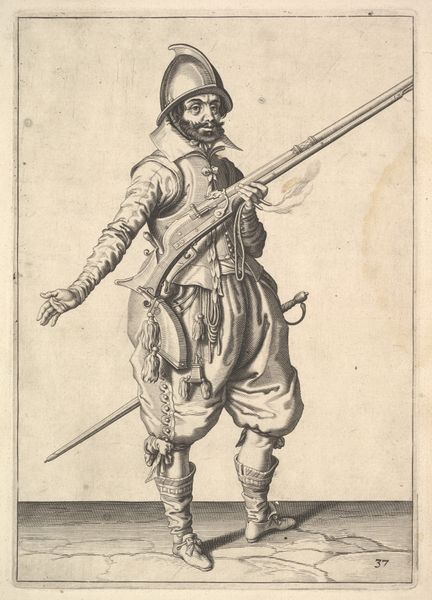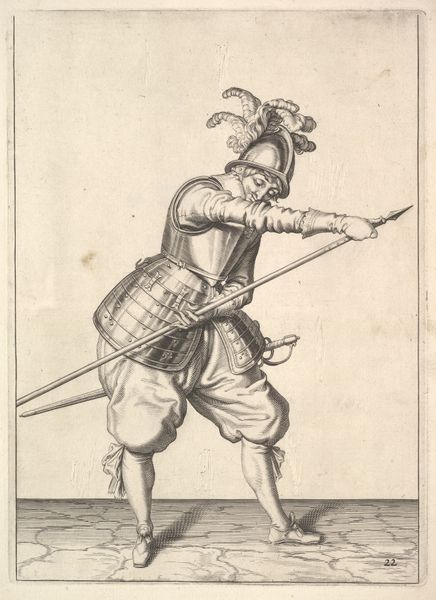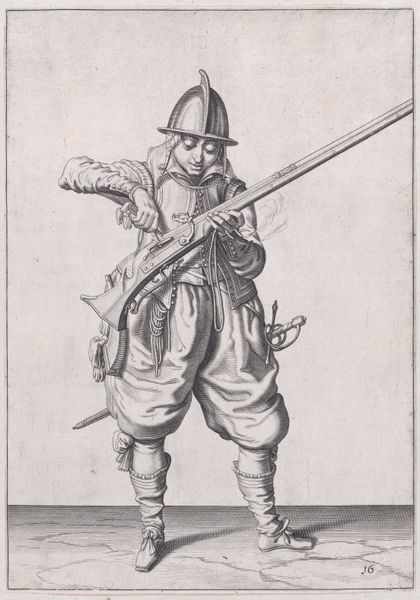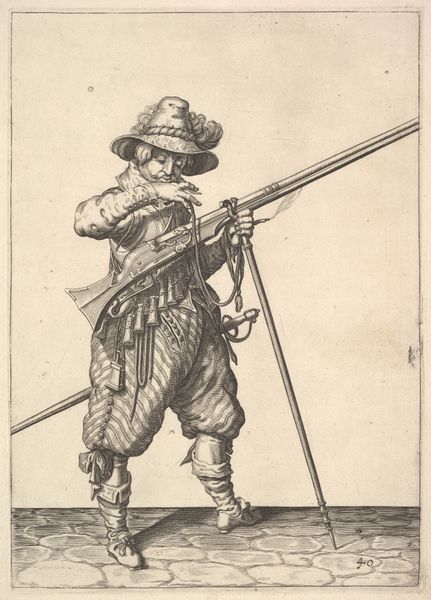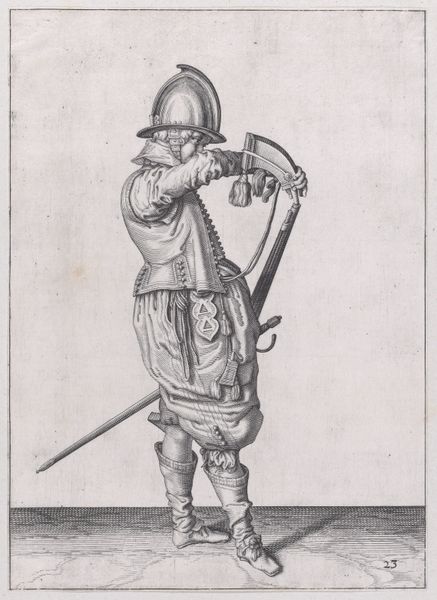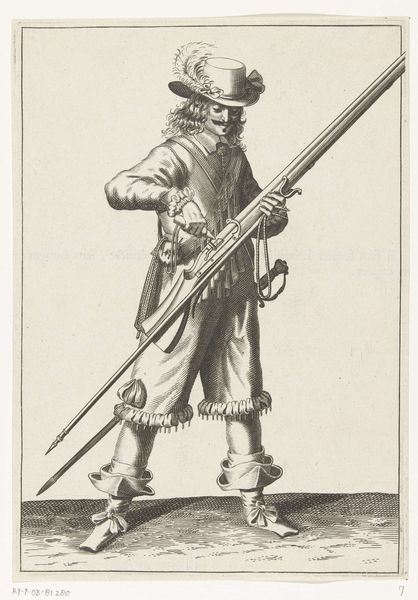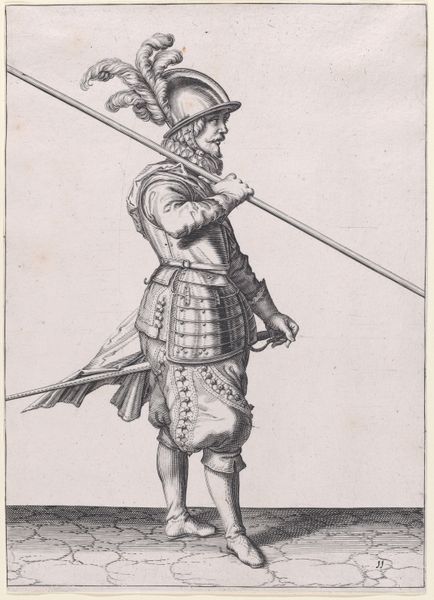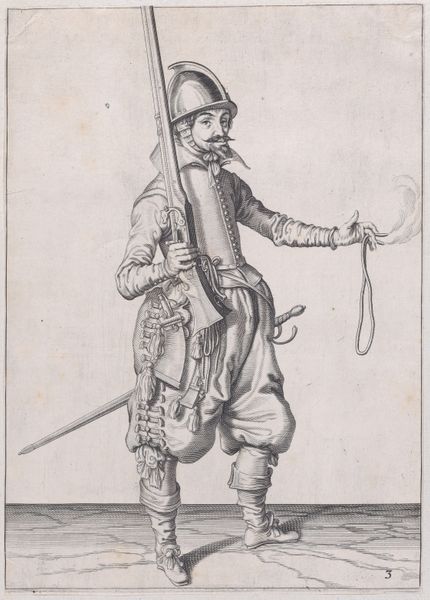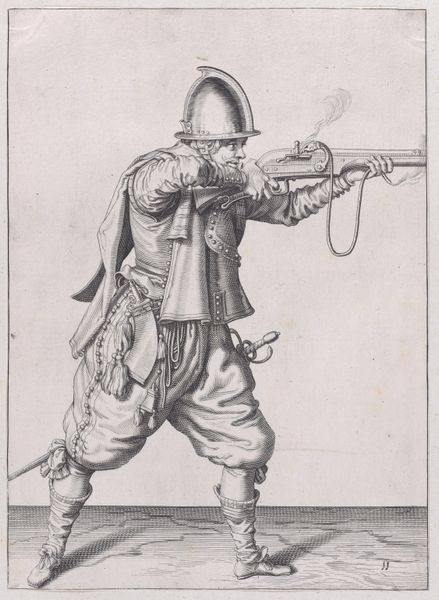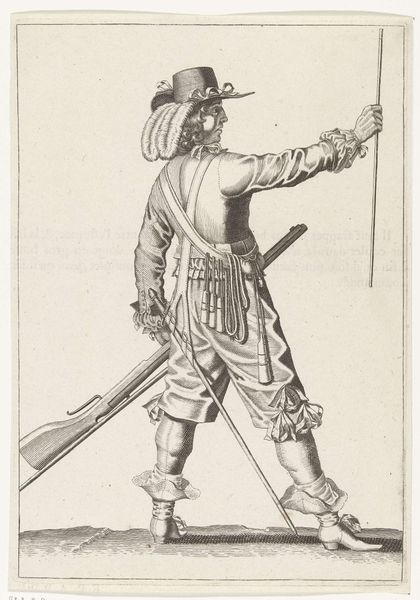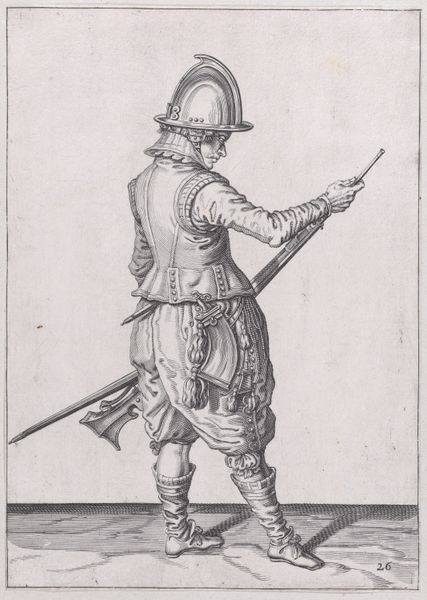
A soldier on guard shaping the match between his thumb and his forefinger, from the Marksmen series, plate 41, in Wapenhandelinghe van Roers Musquetten Ende Spiessen (The Exercise of Arms) 1575 - 1629
0:00
0:00
drawing, print, engraving
#
drawing
#
weapon
# print
#
soldier
#
history-painting
#
northern-renaissance
#
engraving
Dimensions: plate: 10 1/4 x 7 3/16 in. (26 x 18.2 cm) sheet: 15 1/16 x 10 1/8 in. (38.3 x 25.7 cm)
Copyright: Public Domain
Editor: Here we have Jacques de Gheyn II's "A soldier on guard shaping the match between his thumb and his forefinger," an engraving dating from the late 16th or early 17th century. It's striking how detailed the soldier’s uniform is, particularly the textures. What's your interpretation of this piece? Curator: Consider the physical process involved in creating this print. The engraver, de Gheyn, meticulously carved into a metal plate, using tools to transfer the image. The labor itself becomes a key component of its meaning. Look closely at the lines, and think about the force and skill required to create those textures. Editor: I hadn’t really considered the sheer amount of work that went into each print. Was the creation of multiple identical copies significant at that time? Curator: Precisely! The reproducible nature of printmaking allowed for the mass dissemination of information and imagery. This particular print is part of a series, "The Exercise of Arms." So we must consider how it was used. Was it part of a military training manual? What does that tell us about the material conditions of warfare at that time? Editor: So, it's not just about the image of a soldier, but the print itself as an object and its purpose. I never would have looked at it that way. Curator: It's crucial to see beyond the subject and think about how art and the technology surrounding art are products of their social and material circumstances. Reflect on what kind of statement or ideology this form of accessible art conveyed at the time, what was being consumed, and by whom. Editor: That completely changes my perception. I guess understanding the ‘how’ is as important as the ‘what’ in art. Thanks, this was insightful! Curator: Indeed! Examining the materials and means of production opens up new avenues for understanding the art itself.
Comments
No comments
Be the first to comment and join the conversation on the ultimate creative platform.
